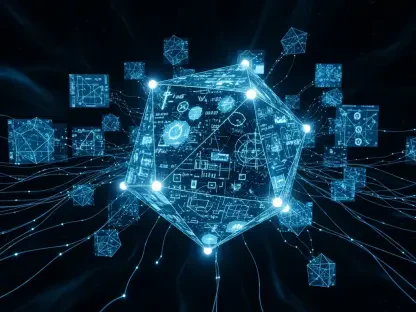What happens when the very technology designed to shield digital fortresses begins to reshape the minds defending them? In the fast-paced realm of cybersecurity, where a single missed threat can cost millions, artificial intelligence (AI) stands as a powerful ally, detecting risks at speeds no human could match. Yet, a quiet concern echoes through the industry: could over-reliance on AI be dulling the analytical edge that cybersecurity professionals need to stay ahead of evolving dangers?
Why AI’s Role Sparks Debate
The significance of this issue cannot be overstated in a landscape where cyber threats grow more cunning by the day. With data breaches costing organizations an average of $4.45 million per incident according to recent studies, the stakes for effective defense are sky-high. AI has emerged as a critical tool, processing vast amounts of data to flag anomalies in mere seconds. However, the question of whether this automation enhances or erodes human judgment sits at the heart of a vital debate, impacting how security teams operate and prepare for future challenges.
This discussion transcends theoretical musings; it shapes real-world outcomes. As attackers leverage sophisticated tactics, including AI-driven phishing schemes, the balance between machine efficiency and human insight becomes a defining factor in safeguarding sensitive information. The urgency to address this balance drives conversations among experts, pushing for clarity on how to harness technology without losing the sharpness of human analysis.
The Dual Nature of AI in Cybersecurity Defense
AI’s integration into cybersecurity offers undeniable advantages, from automating repetitive tasks like log monitoring to predicting potential vulnerabilities with precision. Reports indicate that organizations employing AI-driven security tools reduce threat detection time by up to 60%, a game-changer in high-pressure environments. This efficiency allows analysts to focus on strategic responses rather than drowning in data, amplifying their capacity to tackle complex issues.
Yet, beneath these benefits lies a subtle risk. Over-dependence on AI can foster complacency, where professionals might accept automated alerts without deeper scrutiny, potentially overlooking nuanced threats. The “black box” nature of some AI systems—where decision-making processes remain opaque—further complicates trust, as teams may struggle to validate machine conclusions. This dynamic raises critical questions about maintaining analytical rigor in an era of automation.
Lessons from Tech History: The Google Effect Parallel
Reflecting on past technological shifts provides valuable context for today’s concerns. In the early days of search engines like Google, fears abounded that easy access to information would weaken memory and critical thinking—a phenomenon dubbed the “Google Effect.” Critics worried that instant answers would turn users into passive recipients rather than active learners, diminishing their ability to reason independently.
Interestingly, those predictions only partially materialized. Instead of stunting thought, search tools reshaped how individuals approach problem-solving, encouraging quicker source evaluation and focused research. In a similar vein, AI in cybersecurity holds the potential to redefine analytical processes, not destroy them, provided it is wielded with intentionality. The challenge lies in ensuring that automation serves as a springboard for deeper inquiry rather than a crutch.
Voices from the Trenches: Industry Perspectives
Insights from those on the front lines of cybersecurity paint a nuanced picture of AI’s impact. Zac Amos, features editor at ReHack, emphasizes a key caution: “The real danger isn’t AI itself. It’s using it without question or curiosity.” His viewpoint resonates with a broader industry push to position AI as a partner, not a decision-maker, ensuring that human oversight remains central to security operations.
Research backs this balanced approach, revealing tangible benefits of synergy. Organizations that pair AI with strong human validation save an estimated $2.22 million in breach prevention costs, showcasing the power of combined strengths. Stories from security teams further highlight this dynamic—those who routinely challenge AI outputs during incident debriefs often uncover subtle threats that algorithms miss, proving that skepticism remains an irreplaceable asset in the fight against cybercrime.
Practical Tactics to Preserve Analytical Edge
Maintaining sharp human analysis alongside AI requires deliberate strategies that prioritize critical thinking. One effective method involves framing open-ended questions when interacting with AI tools, such as asking, “What alternative explanations exist for this anomaly?” This approach pushes analysts to explore beyond surface-level outputs, fostering a mindset of curiosity rather than passive acceptance.
Another vital practice centers on manual validation of AI insights. By cross-checking automated alerts against raw data or team observations, professionals build confidence in their findings while honing their investigative skills. Additionally, leveraging AI for scenario simulations—modeling hypothetical attack vectors—encourages teams to test assumptions and uncover hidden risks, strengthening strategic reasoning in the process.
Finally, designing workflows that keep humans in the decision-making loop ensures accountability. Structuring processes so that AI flags issues but final calls rest with analysts preserves judgment while benefiting from technological support. Regular post-incident reviews to assess AI-assisted outcomes further cultivate a culture of learning, helping teams refine their approach to both tools and threats over time.
Building a Future of Balanced Cybersecurity
Looking back, the journey of integrating AI into cybersecurity reflected a delicate dance between innovation and caution. Teams that thrived were those who treated AI as an enhancer of human potential, not a replacement for it. By embedding critical thinking into every interaction with technology, they maintained the analytical sharpness needed to counter ever-evolving threats.
Moving forward, the focus shifted toward fostering AI literacy across security teams, ensuring they could spot biases or errors in automated outputs. Leaders who rewarded questioning over quick fixes built resilient cultures, ready to adapt to new challenges. As the digital landscape continued to transform, the commitment to balancing machine efficiency with human insight stood as the cornerstone of effective defense, guiding the industry toward a safer, smarter future.









